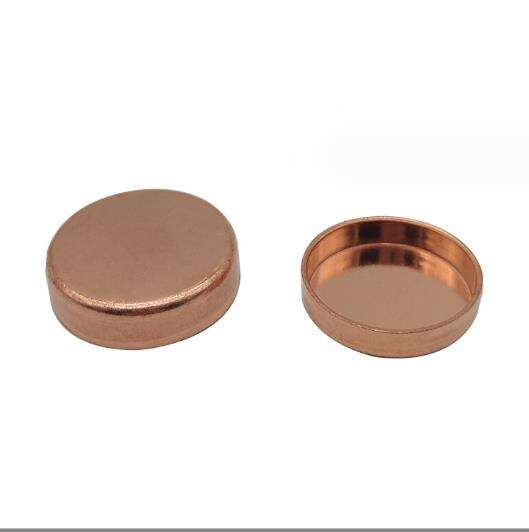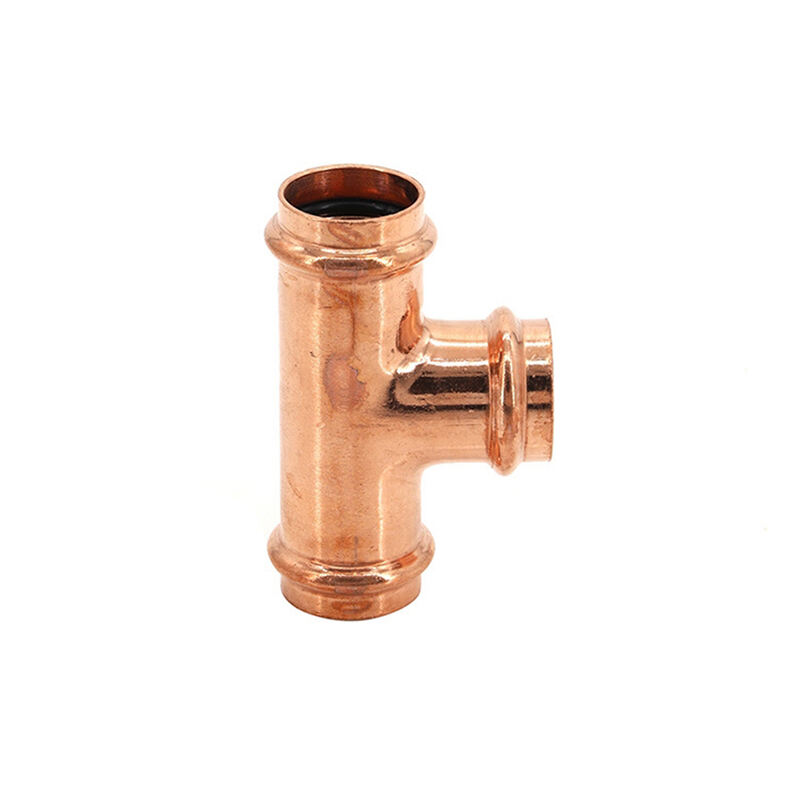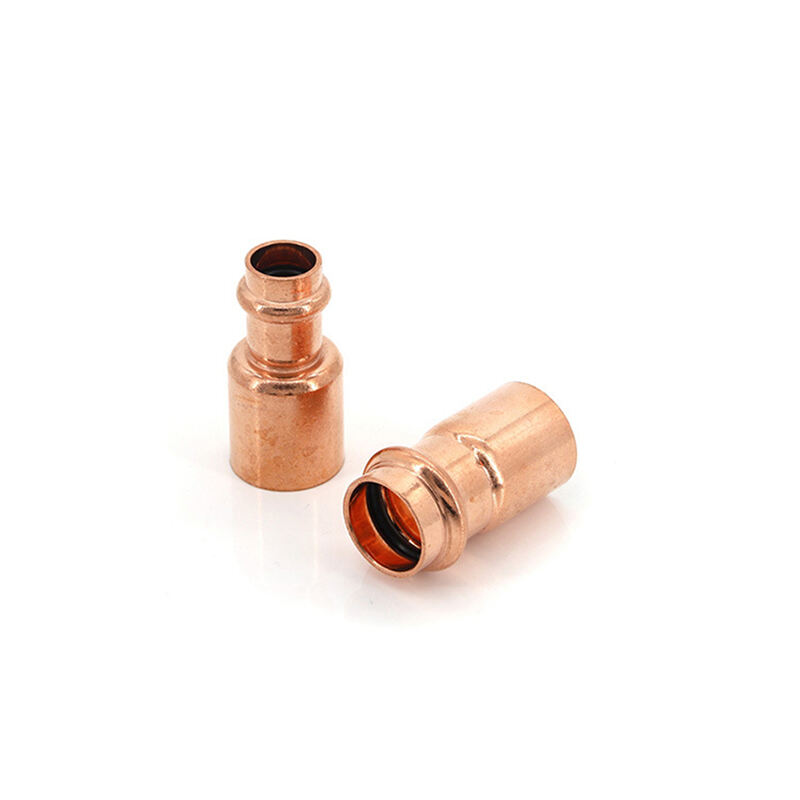Best Practices for Copper Pipe Installation and Maintenance
Choosing the Right Copper Fittings and Connectors
Selecting high-quality copper fittings and connectors is crucial for ensuring the durability and longevity of plumbing systems. Robust copper fittings and connectors, like elbows, tees, and couplings, can handle the stresses imposed by daily use and environmental factors. These components should be compatible with copper pipes and suitable for various plumbing applications. When choosing types, consider the plumbing requirements—elbows for directional changes, tees for branching, and couplings for joining pipes.
To prevent leaks and enhance system integrity, it's vital to match fittings accurately with existing pipe dimensions. Improper sizing can lead to vulnerabilities, potentially resulting in costly leaks. A precise fit ensures stability, supports the structural integrity of the plumbing system, and maintains its efficiency over time.
Proper Solder Techniques with Brass Plumbing Fittings
Using the correct soldering techniques for brass plumbing fittings is essential to ensure secure and leak-proof joints. Begin by cleaning the surfaces of both the pipe and fitting thoroughly, as cleanliness reduces the risk of contamination and ensures a reliable bond. Control the temperature carefully during soldering to avoid overheating, which can damage the fittings and surrounding materials. Proper flame usage is crucial, maintaining it at the correct distance and angle.
Safety during soldering cannot be overstressed. Ensure proper ventilation in the work area and always wear protective gear, such as gloves and goggles, to safeguard against splashes and heat. These measures not only protect the installer but also enhance the quality of the soldering process.
Avoiding Stress Points in Copper Pipe Layouts
Stress points in plumbing systems, especially within copper pipe layouts, can lead to leaks or systemic failures. These points often occur at sharp bends or fittings where stress concentrates. Designing layouts that minimize these stress-inducing elements is key. Opt for layouts that use the least number of bends and fittings, allowing for a more natural flow and alignment of pipes.
Effective layout designs should promote stability and longevity in the plumbing system. For example, integrating gentle curves instead of sharp angles helps alleviate stress concentrations. Similarly, ensuring pipes align smoothly with fixtures can reduce unnecessary tension, supporting a more resilient plumbing infrastructure.
Understanding pH Balance and Water Chemistry
Understanding the impact of pH levels and water chemistry is crucial in preventing corrosion in copper piping systems. Specific studies have shown that acidic water conditions significantly accelerate the corrosion rate, undermining the integrity of copper pipes (source: This Old House). Testing water chemistry regularly and adjusting pH levels can help optimize conditions for copper piping, thereby extending their life span. Various minerals and chemicals present in the water, such as iron deposits and chloride, play a role in escalating corrosion, and mitigations like water treatment or filtration systems are recommended.
Using Protective Coatings for Brass Fittings
Protective coatings offer an effective solution to enhance resistance against corrosion in brass fittings. The market offers various coatings, each with unique benefits such as increased durability and improved resistance to chemicals. Despite their advantages, some coatings might have limitations, including wear over time or difficulty in application. To ensure proper adhesion and longevity of these coatings, it is important to follow the manufacturer's application guidelines, such as cleaning and priming surfaces beforehand for optimal results.
Grounding Electrical Currents Near Pipes
Proper grounding is essential in preventing electrical corrosion in copper pipes, particularly within residential areas. Electrical currents can accelerate corrosion when not appropriately managed. Best practices for installing grounding systems include ensuring that the grounding connections are secure and strategically placed near plumbing fixtures to minimize discharge risks. Plumbing codes and professional recommendations, such as using dielectric fittings, outline specific grounding requirements that serve to protect copper pipes from adverse electrical impacts, as evidenced by Trev Broudy's experience (Santa Barbara Independent).
Routine Cleaning and Maintenance Techniques
Flushing Procedures for Mineral Buildup Removal
Effective flushing procedures are essential for removing mineral buildup in copper pipes, thereby maximizing water flow and ensuring the longevity of the plumbing system. To carry out a successful flushing operation, it is crucial to have certain tools and materials, such as pipe brushes, hoses, and specialized flushing agents designed for mineral removal. Regular flushing should be scheduled based on the water hardness in your area, typically every six to twelve months, to maintain optimal pipe conditions and prevent accumulation that can lead to blockages or pipe damage.
Safe Chemical Solutions for Copper Pipe Cleaning
Identifying safe chemical solutions is vital for cleaning copper pipes without causing damage. Eco-friendly options like sodium bicarbonate and citric acid can effectively clean without harming the environment. Proper application methods, such as mixing solutions according to manufacturer instructions and applying them evenly with a brush or cloth, enhance effectiveness and minimize risks. Inadequate or improper cleaning agents have historically caused pipe damage, highlighting the importance of selecting appropriate options. For instance, using acidic substances unsuitable for copper resulted in pipe corrosion and subsequent failures in multiple cases.
Inspecting Brass Connectors for Wear
Regular inspection of brass connectors is critical to prevent plumbing failures due to wear and corrosion. Signs of wear include discoloration, visible corrosion, or looseness. A detailed checklist for inspection should include checking for these symptoms as well as ensuring that connectors are securely fastened and free from any visible damage. The frequency of inspections can vary; however, environments with high humidity or corrosive elements, such as coastal areas, necessitate more frequent checks—potentially every six months. Early detection through regular inspections can prevent extensive damage and costly repairs.
Repairing Pinhole Leaks in Copper Tubing
Pinhole leaks in copper tubing are often caused by corrosion, usually due to water quality, electrical grounding issues, or external environmental factors. Identifying these leaks early is crucial, as leaving them unattended can lead to larger plumbing failures. A common method for repairing pinhole leaks involves soldering. This technique requires cutting out the damaged section, cleaning the area, and applying solder to seal the leak. Alternatively, epoxy compounds can be used when soldering isn't feasible. To prevent recurring leaks, it is advisable to regularly inspect the plumbing system for early signs of corrosion and consult with professionals about the quality of your water supply. Experts often recommend the use of dielectric unions to minimize corrosive reactions between dissimilar metals in the plumbing system.
When to Replace vs. Repair Copper Pipe Sections
Homeowners face the decision to repair or replace copper pipe sections based on factors such as the pipe's age, condition, and extent of damage. Generally, if the pipe is old and shows extensive corrosion or multiple small leaks, replacement is a better option. Repairing small sections might seem cost-effective, but extensively damaged pipes can lead to frequent repairs, resulting in higher costs in the long run. According to recent studies, homeowners often spend up to 50% more on frequent repairs than on a one-time replacement in the same timeframe. Expert recommendations suggest considering the complete replacement of pipes that are more than 50 years old or exhibit generalized corrosion, saving time and resources in the process.
Sealing Techniques for Copper Pipe Connectors
To ensure leak-proof connections in copper piping systems, understanding the appropriate sealing techniques is paramount. Methods like using Teflon tape or pipe thread sealants are popular for their effectiveness in preventing leaks at pipe joints. However, common mistakes such as over-tightening or not applying the correct amount of sealing material can lead to leaks. Regular inspections post-installation are recommended to ensure seals remain intact. Over time, temperature fluctuations and physical stresses can compromise seals, making inspections essential for maintaining plumbing integrity. By incorporating these practices, homeowners can significantly reduce the risk of leaks in their copper piping systems.
Protecting Copper Pipes from Freezing Temperatures
Insulation Methods for Exposed Copper Lines
Insulating exposed copper lines is critical for preventing freezing during cold weather. Several effective methods can be employed, such as using foam pipe sleeves, fiberglass wrap, or rubber pipe insulation. Foam pipe sleeves are easy to install and offer good resistance against freezing. Fiberglass wrap provides additional insulation and is ideal for extreme cold, while rubber pipe insulation is flexible and can also compensate for thermal expansion. Each material has its unique benefits, such as foam being lightweight and easy to handle, fiberglass offering high resistance to temperature changes, and rubber providing durability. Studies indicate that proper insulation can reduce heat loss by 80%, significantly protecting pipes in various climate conditions, including harsh winters.
Winterization Strategies for Outdoor Plumbing
Implementing winterization strategies for outdoor plumbing can mitigate freeze-related damages. Begin by draining water from outdoor fixtures and ensuring hose bibs are tightly shut. Installing frost-free spigots can also prevent freezing. Weatherproofing outdoor plumbing systems with insulated covers or heat tapes provides further protection. These tapes act as automatic heaters for exposed pipes. The role of professional inspections cannot be understated; they assess the readiness of plumbing systems for winter and identify vulnerabilities. Data reveals that proactive winterization can save up to 30% in repair costs resulting from freeze damage, underscoring the economic and practical benefits of a thoroughly winterized plumbing setup.
Thawing Frozen Pipes Without Damage
Thawing frozen pipes safely is crucial to preventing potential pipe damage. Start by opening the faucet closest to the frozen section to relieve pressure and facilitate the melting process. Utilize tools such as hairdryers or electric heat tapes for controlled warming. Avoid open-flame devices, which can cause cracks or bursts. Commercial products like pipe thawing kits are also available for effective de-icing. Experts recommend maintaining a moderate temperature and monitoring throughout to prevent overheating. Regular inspections during the thawing process can prevent complications, ensuring that the pipes are returned to a functional state without incurring additional damage.





